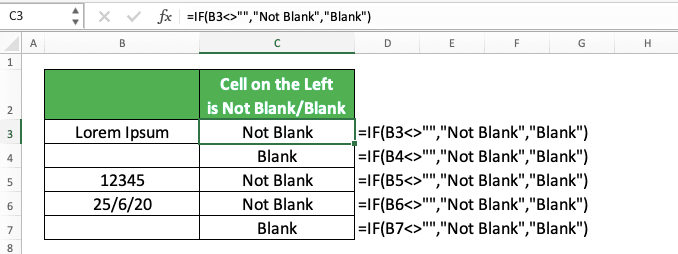How to Determine if a Cell is Not Blank in Excel
Home >> Excel Tutorials from Compute Expert >> Excel Tips and Trick >> How to Determine if a Cell is Not Blank in Excel
In this tutorial, you will learn how to identify whether a cell is not blank or blank in excel completely.
When using conditional formulas in excel, we may sometimes need to determine whether a cell is not blank or blank. This is so we can get a correct result from the formula we write.
In this situation, we have to know how to write a condition that determines that automatically for you. This is the complete knowledge you will get after you learn from this tutorial!
So, do you want to learn more about how to determine if a cell is not blank or blank in excel? Read this tutorial until its last part!
Disclaimer: This post may contain affiliate links from which we earn commission from qualifying purchases/actions at no additional cost for you. Learn more
Want to work faster and easier in Excel? Install and use Excel add-ins! Read this article to know the best Excel add-ins to use according to us!
Table of Contents:
How to Write if a Cell is Not Blank in Excel
The symbol of “not” is <> (empty angle brackets) and “blank” is “” (empty quotes) in excel. Thus, this is how you write a logic condition to determine whether if a cell is not blank in excel.
= A1 <> “”
A1 there is the cell coordinate you want to determine whether it is not blank or blank. You can obviously replace it with the cell coordinate you want to check.
That writing will produce TRUE if the cell is not blank or FALSE if the cell is blank. As the result here is a logic value, we usually write it in a function that needs a logic value input (the most popular one is probably IF).
Example of Its Implementation in Excel: IF Formula if a Cell is Not Blank or Blank
You can see the implementation example of an IF formula with the logic condition if a cell is not blank below.
As you can see, we can determine if a cell is not blank or blank in excel by using <> and “” symbols. Just combine and write them in the way we have discussed before. You will get TRUE or FALSE depending on whether your cell is not blank or blank.
In the example, we want our IF to produce “Not Blank” if the cell is not blank and “Blank” if otherwise. Thus, we write our “if a cell is not blank” logic condition, “Not Blank” text, and “Blank” text in the IF.
Alternative: NOT ISBLANK
Besides using <> and “” symbols, an alternative way to check if a cell is not blank is by combining NOT and ISBLANK. You can get the same result (TRUE for not blank or FALSE for blank) by combining those two functions in a formula writing.Here is the general writing form of the NOT and ISBLANK combination for this purpose.
= NOT ( ISBLANK ( cell ) )
Quite simple, isn’t it? Just write ISBLANK inside NOT and input the coordinate of the cell you want to check inside the ISBLANK. You will immediately get the same result as the one you get with the <> and “” symbols.
Here is the implementation example of the NOT ISBLANK in IF in excel. You can compare its results with our previous ones we get from the <> and “” symbols.

As you can see, we can also check whether a cell is not blank or blank by using NOT and ISBLANK. Just combine them in the way we have discussed before and you will get your checking result correctly!
Exercise
After you understood the way to determine if a cell is not blank or blank in excel, let’s do an exercise. This is so you can practice better what you have learned from this tutorial!Download the exercise file below and answer all the questions. Download the answer key file if you have done the exercise and want to check your answers.
Link to the exercise file:
Download here
Questions
Give your answer in the appropriate gray-colored cell according to the question number. Use <> and “” symbols for the first and second questions and NOT ISBLANK for the third question!- Is the cell on the left not blank? Answer with TRUE or FALSE!
- Is the cell on the left not blank? Answer with “Yes” or “No”!
- Is the cell on the left not blank? Answer with “There is data” or “There is no data”!
Link to the answer key file:
Download here
Additional Note
- If you want to input a non-blank criterion to functions like COUNTIF or SUMIF, input “<>” as the criterion (for example: =COUNTIF(A1:A10,”<>”) will count all non-blank cells in A1 to A10 cell range)
- Be careful with cells that seem blank but they actually contain spaces. They will make you get a wrong result when you check whether they are not blank or blank (you expect to get a blank result but instead you get a not blank result). Delete the spaces first if you identify this as the case in your cells
Related tutorials you should learn from:














